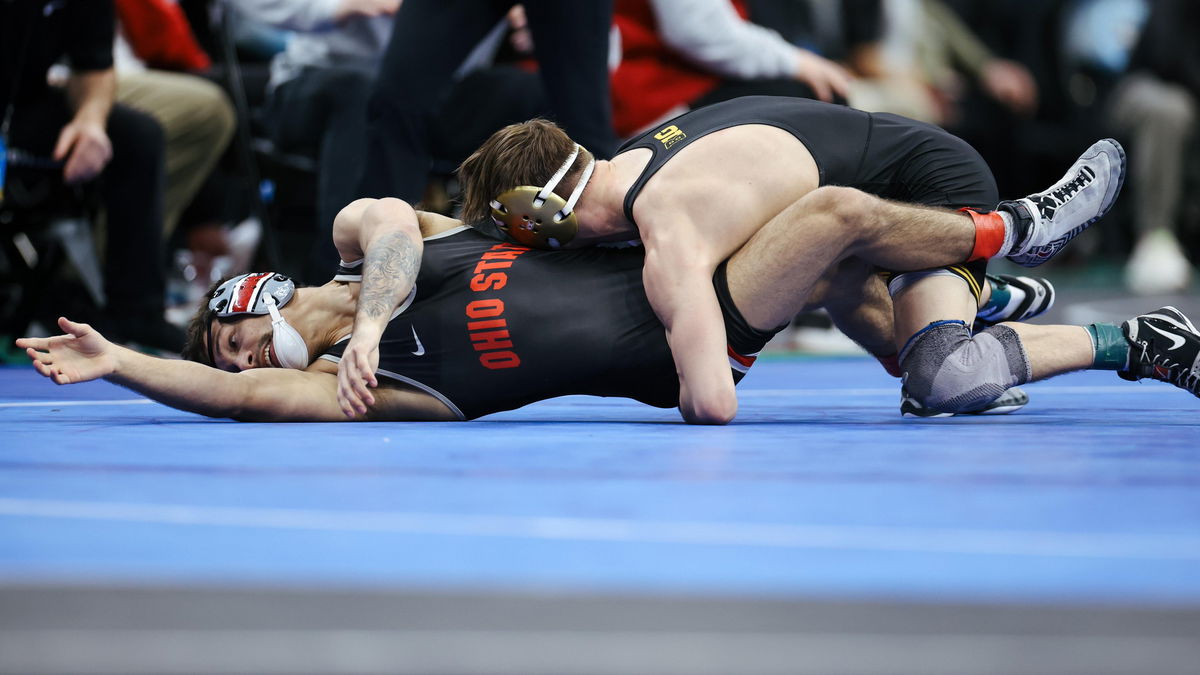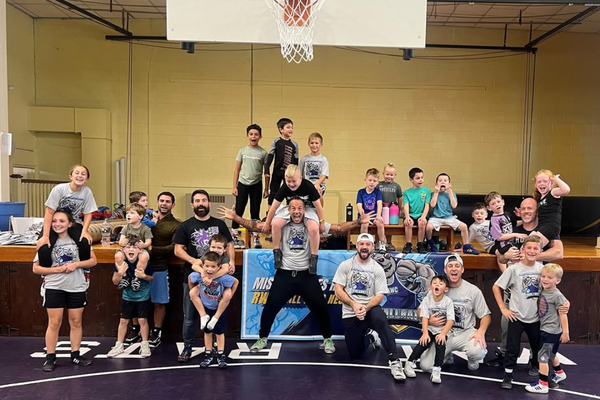

Five years ago, in the Alumni Spotlight of JWU Wrestling, a former standout left behind a simple yet powerful message: “I’d advise you to take risks and not be afraid to fail. Just know that your time at JWU may only be four years, but your knowledge and the relationships you create will last a lifetime.” At first glance, it sounded like the usual farewell wisdom—something students hear as they step off the mat and into the unknown. But those words carried something deeper. It wasn’t just about life after college or keeping in touch with teammates. It was about carrying wrestling—its grit, its pain, its discipline—into every room you walk into for the rest of your life.
Watch What’s Trending Now!
And Pete Reilly, a name well-known in the circles of JWU wrestling, took that belief and ran with it. Class of ’08. Former wrestling star. Now a life coach, Reilly isn’t just shaping lives—he’s helping athletes reclaim their worth beyond the All-American podium. Recently, Pete appeared on the Wrestling Mindset podcast, and what he shared wasn’t your typical locker-room pep talk. It was raw and real. It was the truth that too many wrestlers feel, but few speak aloud.
“We’re talking 3% of the wrestling community becomes an All-American. Probably less. Okay, probably even less,” Reilly said. “So then you have 97 to 98% of the guys that felt the way that I felt. And it’s like you leave, and you almost feel like a loser.” It was raw. Unfiltered. Honest. And it hit home for countless athletes who never got to stand on a podium. Reilly wasn’t bitter, though. He was concerned—concerned about how wrestling, a sport that teaches toughness and resilience, could also leave people broken when they hang up their singlets without medals around their necks. Because when success is narrowly defined by hardware, most will walk away feeling empty. But then he pivoted to what he believes is the savior: multiplicity. Not just in skills or tactics, but in identity.
ADVERTISEMENT
View this post on Instagram
“There’s forty guys on the team,” the former wrestling star explained. “Playing multiple sports, I think, is amazing for young people. Even as they get older, some of the college kids will come back in, and they hear me talking multiple sports. And after practice, they’ll say, ‘Man, you know what? I loved football. I wish I (had) played football in high school. I wish I didn’t just stop playing football in eighth grade and focus just on wrestling.’” That one regret—that narrowing of self—became Reilly’s mission to prevent in others. He has been very outspoken about it quite recently. And this will surely play a pivotal role in creating wrestling champions of the future!
“Don’t let wrestling define you,” he said. “Utilize everything that you learn from wrestling. Put that into anything in life, and you’re going to be successful.” In clearer words, he wants to create ‘people‘ who ‘wrestle‘, rather than ‘wrestlers‘ who are ‘people‘. And he’s not just speaking in metaphors. History has its share of college wrestlers who swapped mats for gridirons—and made names for themselves.
ADVERTISEMENT
The college wrestling stars who chose the paths less travelled
Names like Stephen Neal and Carlton Haselrig remind us that the wrestling mat can be a launchpad, not a finish line. Of the two, Neal never played a snap of college football. He spent his time on the mat at Cal State Bakersfield, dominating as a two-time NCAA champion and winning the Dan Hodge Trophy—wrestling’s version of the Heisman. Yet after college, he made the jump to the NFL, defying the odds. No draft pick. No football résumé. Just a wrestler’s mindset. He ended up protecting Tom Brady and winning three Super Bowl rings with the New England Patriots. Wrestling didn’t limit him. It built him. Then there’s Carlton Haselrig—a man who rewrote the NCAA record books.
ADVERTISEMENT
Six national titles. A blend of Division II and I, back before the rules changed. Haselrig’s dominance on the mat was unmatched, but he, too, took a road less traveled. Without any college football experience, he made it to the NFL and became a Pro Bowl offensive lineman for the Pittsburgh Steelers. A wrestler’s balance, a fighter’s drive. Again, the sport shaped him—but didn’t box him in. And then there’s Ray Lewis. His story begins in Lakeland, Florida, at Kathleen High School. Known across the country for what he became, few talk about what helped forge that fire: wrestling. As a teenager, Ray wasn’t the biggest guy on the field. But in the wrestling room, he found something that size couldn’t measure—grit, leverage, pain tolerance, and mental warfare.
Lewis became a Florida state wrestling champion. On the football field, he was an All-American linebacker who hit harder, read faster, and moved smarter than guys twice his size. Because wrestling had taught him how. The mat became his mirror, showing him the raw truth, sharpening him in ways no weight room ever could. That edge? That legendary intensity? It started in a singlet. So, Pete Reilly pointed at these athletes who didn’t stop where wrestling ended. They carried it with them into locker rooms, huddles, boardrooms, and life.
ADVERTISEMENT

Because the mat doesn’t just teach you how to win. It teaches you how to fight when no one’s watching. How to believe when no one else does. How to carry yourself—shoulders squared, chin up—whether you’re facing an opponent, an obstacle, or an uncertain future. And maybe that’s the greatest win of all.
ADVERTISEMENT
ADVERTISEMENT
ADVERTISEMENT
ADVERTISEMENT

